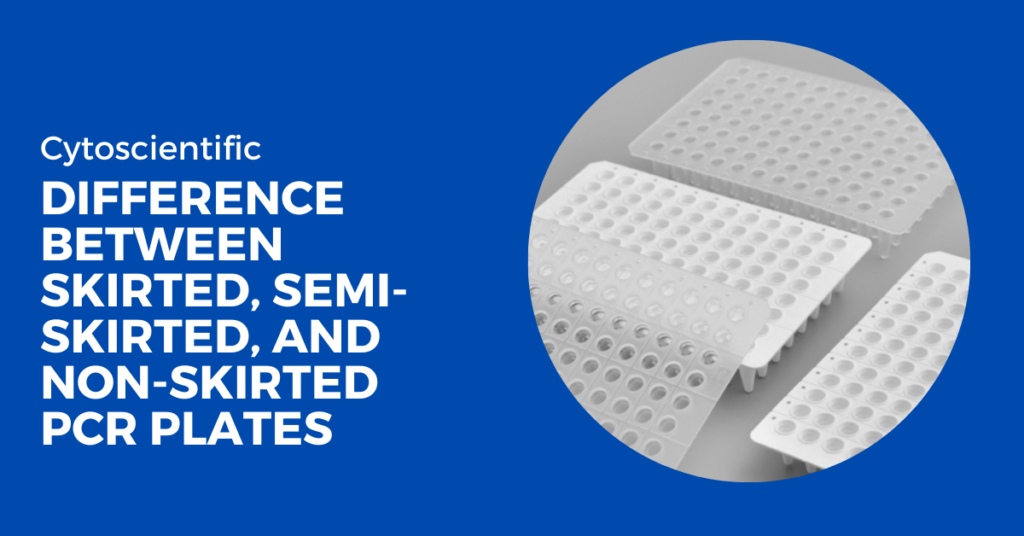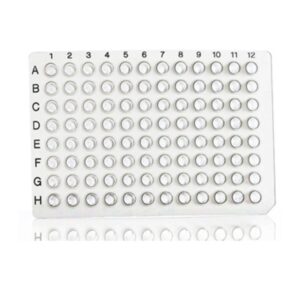PCR plates are an essential tool in laboratories, especially for high-throughput DNA amplification processes like Polymerase Chain Reaction (PCR). These plates come in different styles: skirted, semi-skirted, and non-skirted. Understanding the differences between them can help you choose the right plate for your experiment.
Skirted Plates: Maximum Stability and Automation
Skirted PCR plates have a flat edge, or “skirt,” around the entire perimeter of the plate. This makes them more rigid and stable, especially when using automated liquid handlers or plate readers. The skirt also provides more support for high-throughput applications, as it ensures the plate fits securely into equipment without shifting. However, skirted plates are not compatible with all thermal cyclers because the skirt may block the heated lid.
Key Features of Skirted Plates:
- Rigid and stable
- Ideal for automation
- May not fit all thermal cycler
Semi-Skirted Plates: A Versatile Option
Semi-skirted PCR plates have a partial skirt, which means the sides have a small lip but not a full border. These plates strike a balance between the stability of skirted plates and the flexibility of non-skirted ones. The semi-skirt offers some support and is often used in automated systems while still being compatible with more thermal cyclers compared to fully skirted plates.
Key Features of Semi-Skirted Plates:
- Partial skirt for moderate stability
- Suitable for semi-automated workflows
- Better fit with more thermal cyclers
Non-Skirted PCR Plates
Non-skirted PCR plates have no skirt at all. They are lightweight, flexible, and can be used with almost any thermal cycler. Because they lack the extra support of a skirt, they are more prone to movement and may not be ideal for automation. However, they are often the most versatile choice when working with various types of thermal cyclers or manual pipetting.
Key Features of Non-Skirted Plates:
- No skirt, very flexible
- Compatible with most thermal cyclers
- Not recommended for automation
Selecting the Right PCR Plate for Your Experiment
Choosing between skirted, semi-skirted, and non-skirted PCR plates depends largely on your laboratory’s needs, the type of thermocycler or robotic system in use, and the level of throughput. For automated systems and high-throughput environments, skirted plates offer the best option. If your lab requires a blend of manual and automated processes, semi-skirted plates may provide the right balance. For labs focused on flexibility and cost-saving measures, non-skirted plates are often the preferred choice.
FAQs
1. Can I use non-skirted plates in automated systems?
While possible, non-skirted plates are generally not recommended for high-automation systems as they lack the stability that skirted and semi-skirted plates provide.
2. What are skirted PCR plates made of?
Most PCR plates, including skirted ones, are made of polypropylene, a durable plastic material that withstands thermal cycling conditions.
3. Are semi-skirted plates more affordable than skirted plates?
Yes, semi-skirted plates are typically less expensive than fully skirted plates but offer more stability than non-skirted versions.
4. Why should I use fully skirted plates for qPCR?
Fully skirted plates are preferred for qPCR because they provide enhanced thermal contact and stability, essential for accurate results in real-time PCR applications.
5. Can I label non-skirted plates easily?
Non-skirted plates provide minimal space for labeling, which may be a disadvantage in workflows requiring clear identification of samples.
6. Do non-skirted plates fit all PCR machines?
Yes, non-skirted plates are compatible with most PCR machines, offering maximum flexibility in equipment use.




